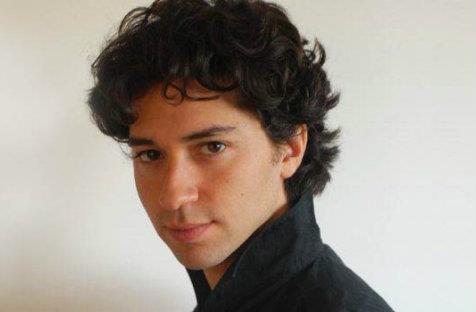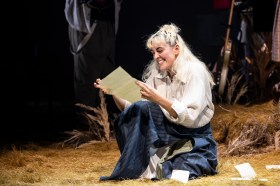A bit of a weird name for the concert, if you ask me: ‘Night Moods’. (And thank you kindly, dear reader, for taking the trouble to ask.) It was scheduled for three o’clock in the afternoon, for instance, although the view out of the Utzon Room of the Sydney Opera House – the view of the bad side of the harbour (or at least the less interesting side) – was grey and dismal and carrying nary a memory of the sun. Indeed, it was probably one of the coldest and wettest days that Sydney has had this year. So there was nothing like a nocturne or two from the ivories to cheer things up and make us even more depressed. Wine, however, was available to be had before the concert began, which did much to raise spirits, one suspects. (Pianist Sergio Tiempo remarked, upon stepping up the small platform in front of the windows, that we had ‘started getting drunk without him’.) It was the best type of wine to have, too – that is, free. (This critic chose to abstain, however.)
The first aspect of the recital that one particularly noticed was the volume of the piano. A recital last year, for instance, did not seem quite so loud, but one was in a different position in the room, so the acoustics may have been somewhat different. Or Tiempo was just hitting the notes harder. It wasn’t unbearably loud, mind you, but one’s ears were certainly aware, on occasion, of the decibels. (Tiempo – who is quite the chatty performer between pieces, as well as a bit of a grunter/hummer during them – apologised for the volume, hoping that it wasn’t too much (there were enthusiastic murmurs from the audience to say it was fine), and that he’d tried to get ear plugs for the audience.)
We began with Chopin’s Nocturne No. 4 in F, which was a moody and passionate number, before we moved onto his Piano Sonata No.3 in B Minor, Op. 58, which Tiempo, for the most part, played superbly. (The scant program tells us that he is a renowned interpreter of Chopin.) Notable in this interpretation was a wonderful intensity contrasted with a very pleasant lightness of touch when needed (his speedy downward scales in the fourth movement, for instance, sticking in the ear afterwards). The largo, however, wasn’t quite as engaging as one might have hoped; it as almost as if Tiempo had put too much into it, invested too much passion.
Ravel’s Gaspard de la nuit was next, with a virtuosity that sounded as far from mechanical as possible. Considered, as the program tells us, to be ‘one of the most virtuosic compositions ever written for piano’, it takes some deft hands to pull it off, and again Tiempo excelled in the faster and louder sections, though when it came to the slower middle movement, one wasn’t as engaged. (It’s been a good month or two in Sydney for the slower pieces of music – the adagios and the largos and the like – but perhaps the tide has begun to turn.)
Liszt’s Consolation No. 3 followed, reminiscent of a Chopin nocturne. It came and went pleasantly, without much fanfare. And then there was Alberto Evaristo Ginastera’s Three Argentinean Dances, where the Argentinian Tiempo let loose, much to the satisfaction of the audience, who called for two encores, the first, a Venezuelan dance, and the second – to keep the balance of nationalities, as Tiempo explained – an Argentinian tango.
Tiempo, on the whole, was an entertaining pianist, with his curly locks of black hair bouncing to and fro in the direction he was travelling up and down the keyboard in, and while perhaps not the most sensitive of musicians (though his Nocturne was successfully haunting), he has an undeniable power and facility that was a pleasure to hear.
Rating: 3 ½ stars out of 5
Sergio Tiempo – Night Moods
Utzon Room Music Series
Sergio Tiempo (piano)
Frederic Francois Chopin – Nocturne No.4 in F
Frederic Francois Chopin – Piano Sonata No.3 in B minor, Op. 58
Joseph-Maurice Ravel – Gaspard de la nuit
Franz Liszt – Consolation No. 3
Alberto Evaristo Ginastera – Three Argentinian Dances
Utzon Room, Sydney Opera House
23 June





